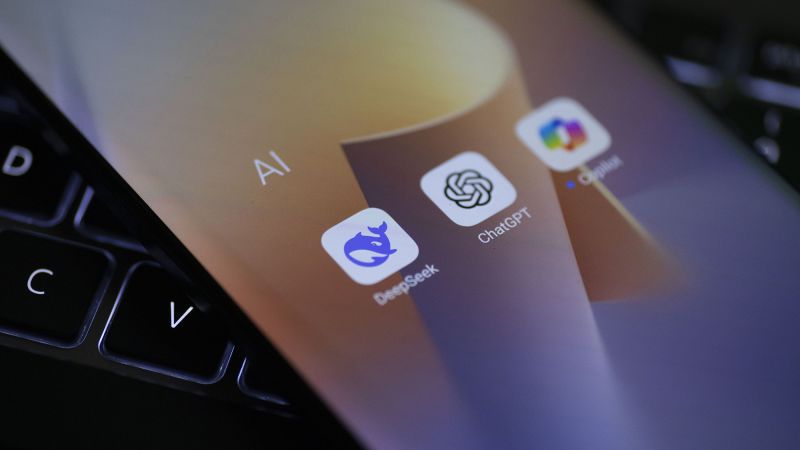DeepSeek has emerged as a disruptive force in the technology landscape, particularly within the realm of artificial intelligence (AI). This past month, the Chinese tech startup has garnered significant attention from AI experts and enthusiasts alike, largely because of the release of its R1 AI model. Experts in the field suggest that this is merely the inception of DeepSeek’s profound impact on AI technology, underscoring the urgent need for industry leaders to take note.
The headlines recently have been dominated by DeepSeek, particularly after its R1 AI model showcased performance that is reportedly comparable to OpenAI’s well-regarded o1 model—only at a fraction of the cost. This development has not only shaken the stock market, causing tech stocks to undergo considerable turmoil, but has also led to DeepSeek briefly surpassing ChatGPT to secure the title of the top app in Apple’s App Store. Such rapid ascension has instigated grave concern among American tech giants regarding the United States’ competitive stance in the ongoing AI race against an increasingly formidable China.
Scrutiny intensified as Vice President JD Vance spoke at the Artificial Intelligence Action Summit in Paris. While he refrained from directly addressing DeepSeek or China, his statements underlined the utmost importance of the U.S. maintaining its leadership role in AI. He asserted unequivocally, “The United States of America is the leader in AI, and our administration plans to keep it that way,” while advocating for international partnerships, an acknowledgment that collaboration is essential in this highly competitive domain.
However, the intrigue surrounding DeepSeek extends beyond just its efficiency and cost-effectiveness. Experts are particularly fascinated by how the R1 model demonstrates reasoning capabilities, allowing it to “think” through responses in a way that enhances the quality of results. Additionally, DeepSeek’s commitment to making crucial components of its technology publicly available can potentially catalyze advancements across the entire sector.
The escalating popularity of AI, particularly in the last couple of years, has transformed how individuals engage with technology. Generative AI services, exemplified by ChatGPT, have fundamentally altered workflows and interactions, leading to seismic shifts in industries. Companies like Nvidia have reaped the benefits of this AI renaissance, compelling tech leaders to keep a vigilant eye on developments that promise to usher in even more sophisticated models.
Oren Etzioni, former CEO of the Allen Institute for Artificial Intelligence, characterized the excitement surrounding DeepSeek as a reflection of real advancements rather than hype. Yet he cautions that the pace of innovation in AI is incredibly swift. Responses from other tech leaders have showcased the mixed sentiments arising from DeepSeek’s rise; for instance, Google DeepMind CEO Demis Hassabis deemed the surrounding hype as “exaggerated,” but acknowledged the model as potentially the best work emerging from China.
On the corporate front, leading figures in tech have observed the ongoing innovations at DeepSeek with great interest. Microsoft CEO Satya Nadella appreciated DeepSeek’s contributions, calling them significant in their potential for real innovations, while Apple’s Tim Cook noted that “innovation that drives efficiency is a good thing.” However, skepticism looms as well; some analysts, such as those at SemiAnalysis, have disputed the startup’s claims regarding the low cost of training their model.
Compounding matters, there are growing concerns from lawmakers in the U.S. regarding the security risks associated with DeepSeek, reflecting apprehensions similar to those raised over the popular social media platform TikTok. These concerns primarily stem from speculations about possible ties between DeepSeek and the Chinese government, prompting some legislators to push for restrictions on the app’s use in government settings.
Despite critiques, the tech community appears energized by the implications of DeepSeek’s technology. Prominent voices in the AI research community are contemplating how DeepSeek’s contributions could revolutionize product offerings. For instance, Lewis Tunstall, a senior research scientist at Hugging Face, noted that while DeepSeek has made significant contributions, critical elements remain unshared. This has led to efforts to fully open source its R1 model, despite the initial research paper lacking the code or training data.
The broader ramifications of DeepSeek’s innovations are yet to be fully realized, as researchers, academics, and developers remain engaged in understanding how these breakthroughs can shape the AI landscape moving forward. Key insights stem from DeepSeek’s model’s ability to reason and learn from other models while offering transparency in how it derives answers—features that set it apart from its competitors. The AI community remains poised with anticipation regarding future iterations that could build on these reasoning aspects, in alignment with tech giants’ pursuits to develop next-generation AI agents.
As the AI sector continuously evolves, the developments surrounding DeepSeek will undoubtedly serve as a focal point among industry leaders, while also igniting conversations about ethical implications and regulatory frameworks surrounding AI technologies. Given the rapid pace of innovation, DeepSeek may soon find its prominence succeeded by yet another breakthrough, as predicted by experts.











